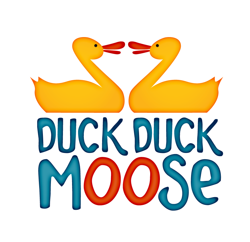 A Q&A with Duck Duck Moose co-founder Caroline Hu Flexer. The San Francisco–based company was founded in 2008 and raised $7 million in Series A funding in late September from Sequoia Capital, Lightspeed Venture Partners and Stanford University.
A Q&A with Duck Duck Moose co-founder Caroline Hu Flexer. The San Francisco–based company was founded in 2008 and raised $7 million in Series A funding in late September from Sequoia Capital, Lightspeed Venture Partners and Stanford University.
SUB: Please describe Duck Duck Moose, and your value proposition.
Hu Flexer: Duck Duck Moose creates educational children’s applications for the iPhone, iPod touch, iPad and Android. Our team has invented original apps that teach nursery rhymes and songs, introduce early learning concepts in literacy and math, and encourage open-ended creative play through drawing and storytelling.
SUB: Who are your target users?
Hu Flexer: Our target users are preschool and early elementary school aged children.
SUB: Who do you consider to be your competition?
Hu Flexer: There are some independent app developers producing apps geared toward children using licensed content as well as major media companies like Disney and PBS who base their content on their characters and properties. However, most of today’s apps for children fall into two categories: games, which are usually designed to be interactive, and books, which are usually designed to be educational. There are still relatively few apps that are built to be both interactive and educational. Duck Duck Moose bridges that gap by creating original content combined with highly interactive, engaging educational experiences for children.
SUB: What differentiates Duck Duck Moose from the competition?
Hu Flexer: What sets Duck Duck Moose apart is our design process and how we develop our apps from end-to-end—from the initial kernels of a concept to launch. All of our apps feature original characters and stories developed by the creative team at Duck Duck Moose, and my husband and I even produce the music. We follow a user-centered design approach whereby we test extensively with kids at all points during our development cycle. With this approach, we’ve been able to create 14 titles, all of which have been well received by children and parents, have won awards, and have reached the Top 1-5 rankings in Education or Kids Games on the AppStore.
SUB: When was the company founded and what were the first steps you took in establishing it?
Hu Flexer: My husband Michael Flexer and I founded the company with our friend Nicci Gabriel in 2008. Between the three of us, we could create apps end-to-end. Nicci is an illustrator and graphic designer, I have a background in design and business—first architectural design and then at IDEO—and my husband was a founding engineer at Siebel Systems. Most importantly, we all put a premium on education for our kids.
SUB: What was the inspiration behind the idea for Duck Duck Moose? Was there an ‘aha’ moment, or was the idea more gradual in developing?
Hu Flexer: Our children were the inspiration for Duck Duck Moose. The idea was born when my two-year-old wanted to play with our first generation iPhones. I noticed how the touchscreen enabled really young children to interact with technology, and I could see the potential for learning. The experience was very engaging for her but there were no high quality educational apps designed for young children.
SUB: How did you come up with the name? What is the story behind it?
Hu Flexer: We used a similar process that we use in our product design. We started with a brainstorm to come up with names that were fun, kid-centric, and that had an available URL. One idea was the popular children’s game, Duck Duck Goose, and then we thought of Duck Duck Moose, as a fun play on those words. That one ended up sticking.
SUB: What have the most significant obstacles been so far to building the company?
Hu Flexer: So far, we’ve been a very small team. Up until early this year, there were only four of us, who built the first 11 titles, and there was a limit to how quickly we could expand. We also had no marketing budget and were 100 percent product-focused. We’re very excited now to have the funding to be able to expand more quickly.
SUB: You just raised $7 million in Series A funding. What are your plans for the funds?
Hu Flexer: Since we’ve closed this round of funding, we’re on a path to grow Duck Duck Moose and design more experiences for children to learn to sing, read, write, do math, draw and create. We are excited to expand our company and hire amazing talent to join the team. We are looking to build out our product team with engineers, animators, and illustrators, and are also looking to hire executives to lead marketing and business development.
SUB: Why was this a particularly good time to raise more outside funding?
Hu Flexer: This was our first round of external funding; we had bootstrapped the company up until this point. We saw the opportunity to grow. We have endless ideas and we wanted to be able to expand our team and our products.
SUB: How does the company generate revenue or plan to generate revenue?
Hu Flexer: We generate revenue from downloads of our apps. So far, we have more than 2.4 million paid app downloads.
SUB: What are your goals for Duck Duck Moose over the next year or so?
Hu Flexer: We are looking to expand our portfolio of apps and grow our team. We are continuously brainstorming ideas for new apps and refining our current titles based on ‘kid testing’ and feedback from parents and teachers.
Duck Duck Moose – www.duckduckmoose.com












